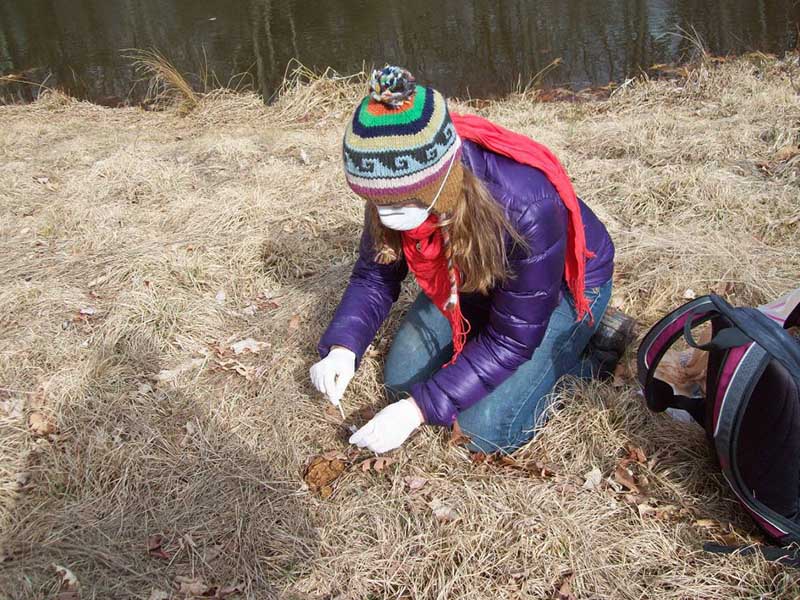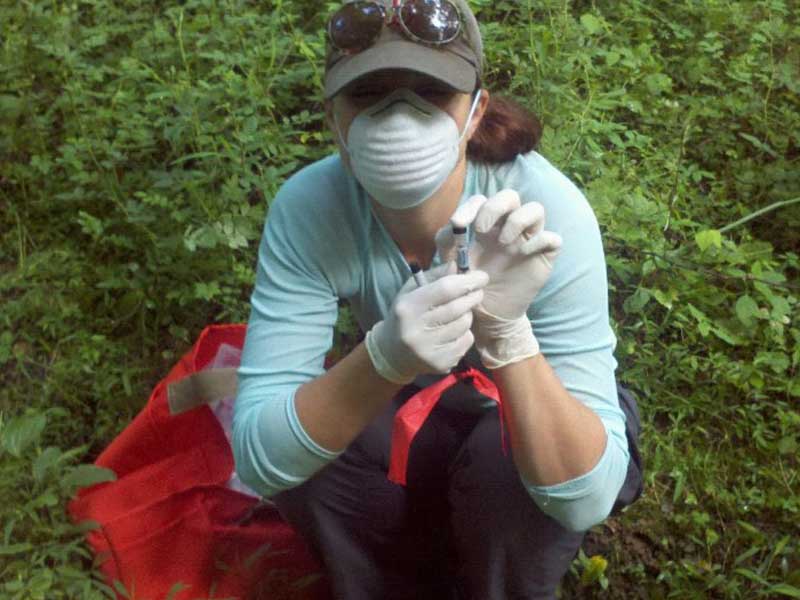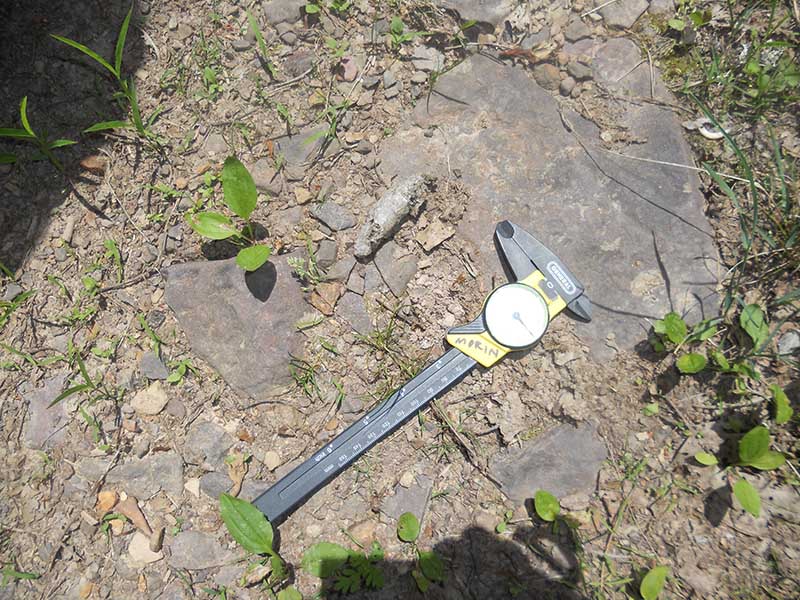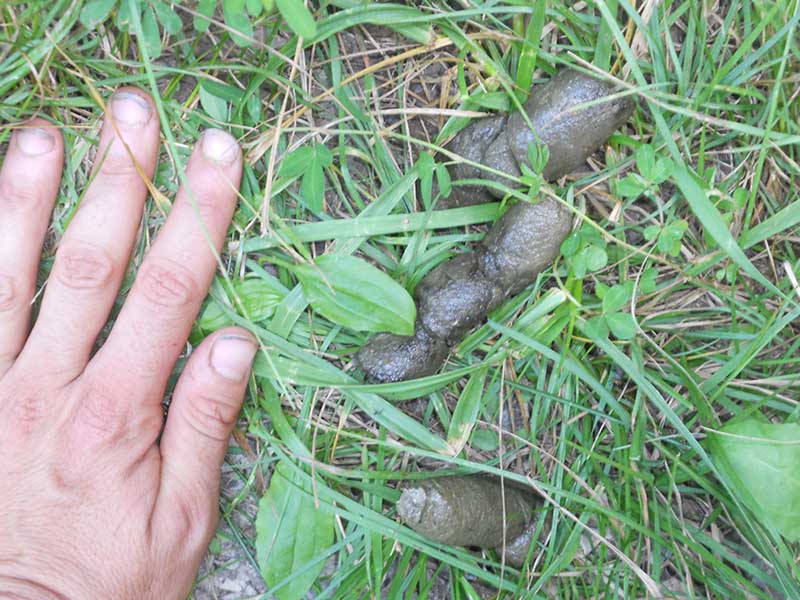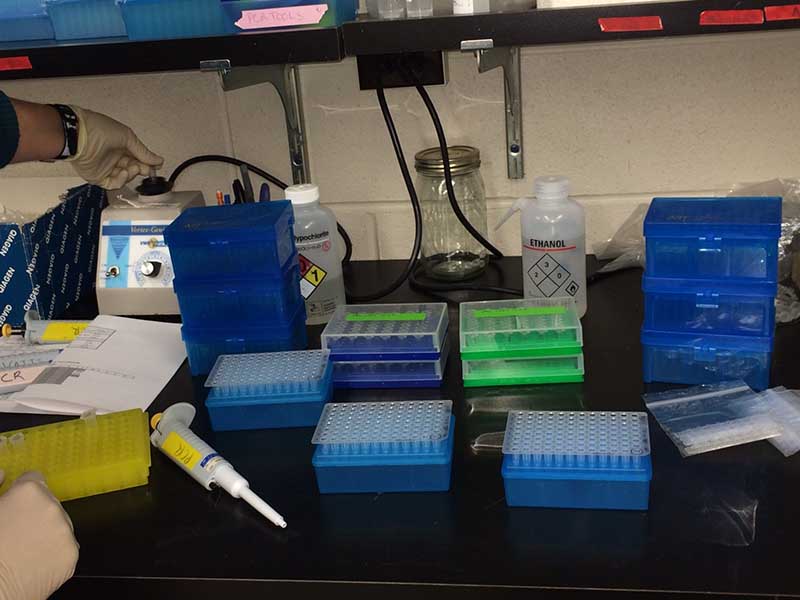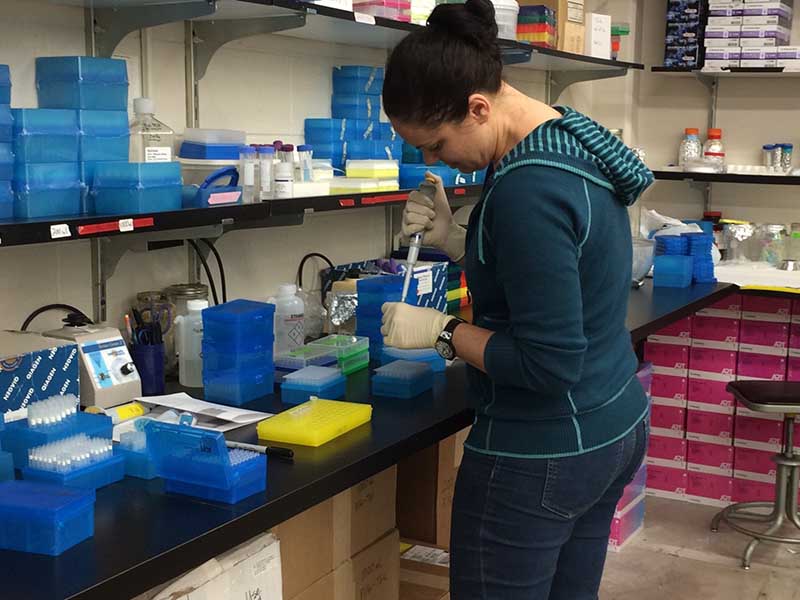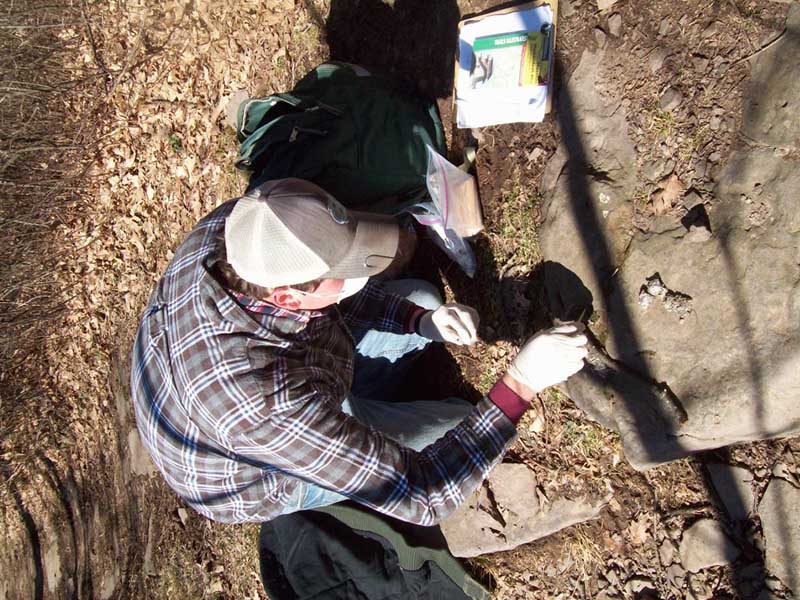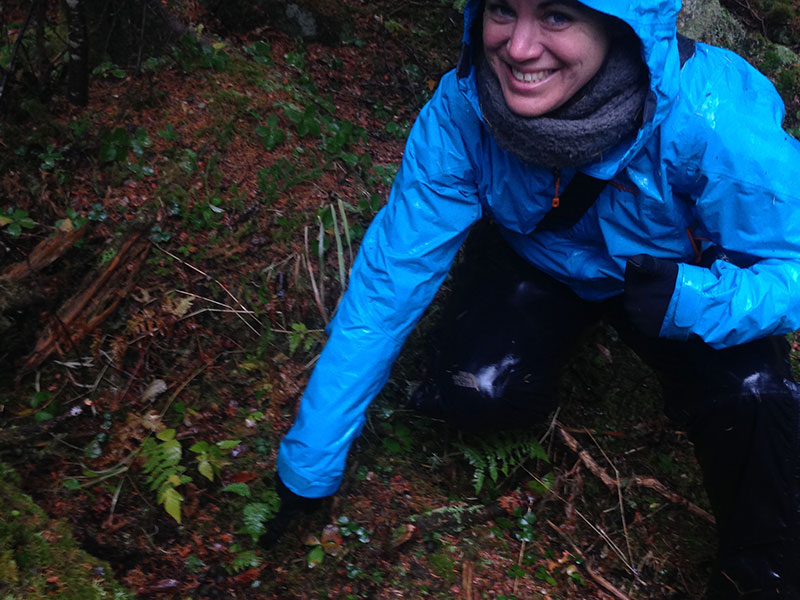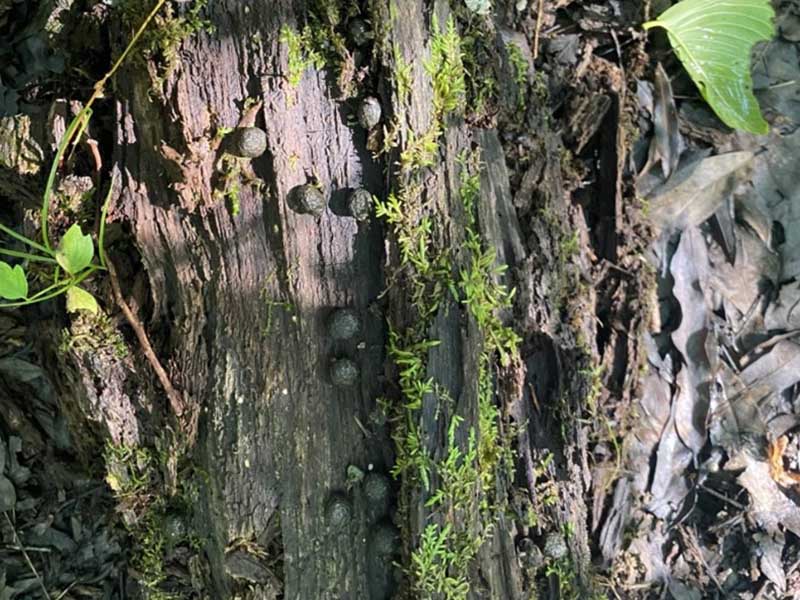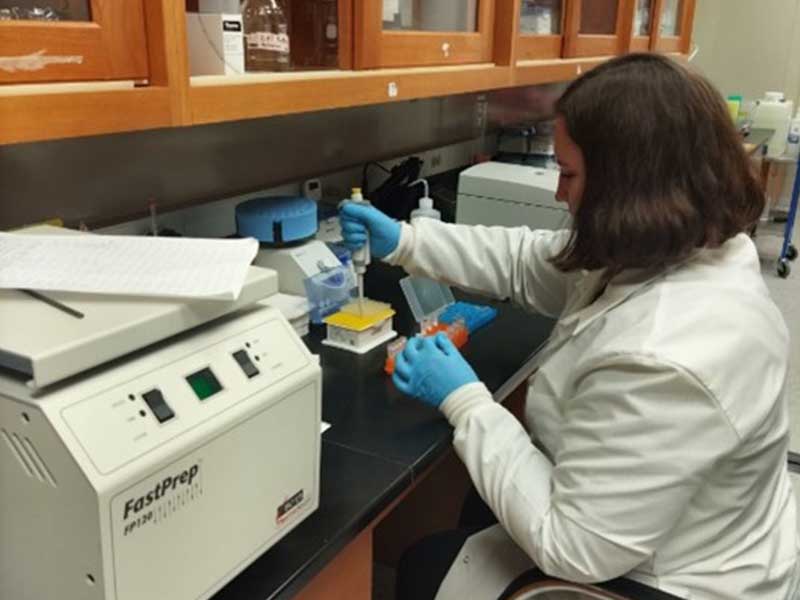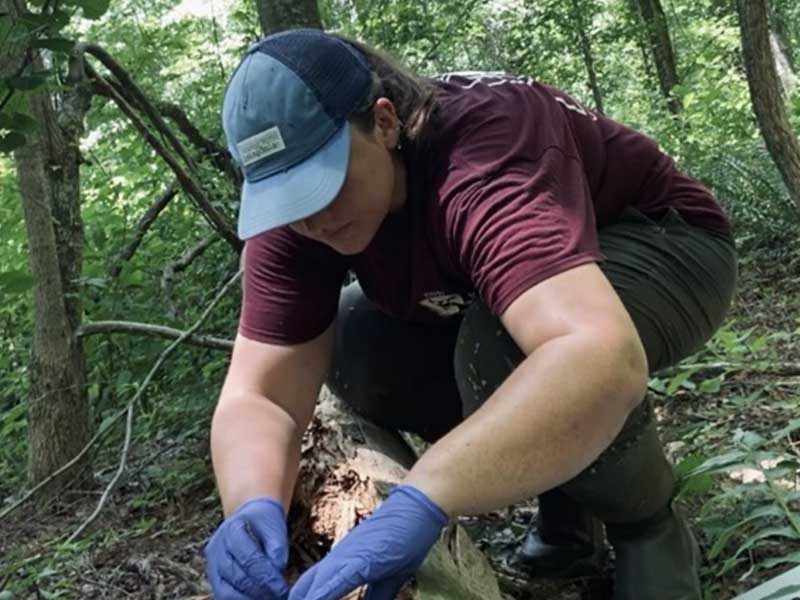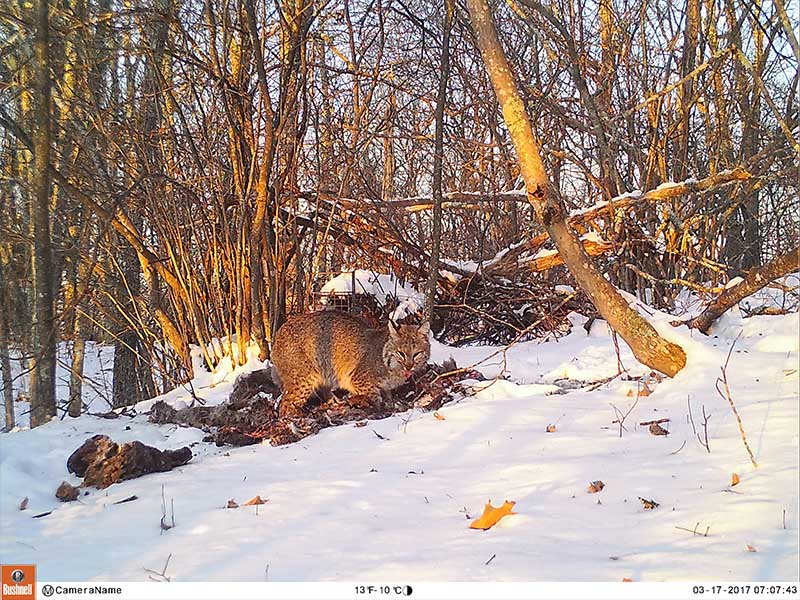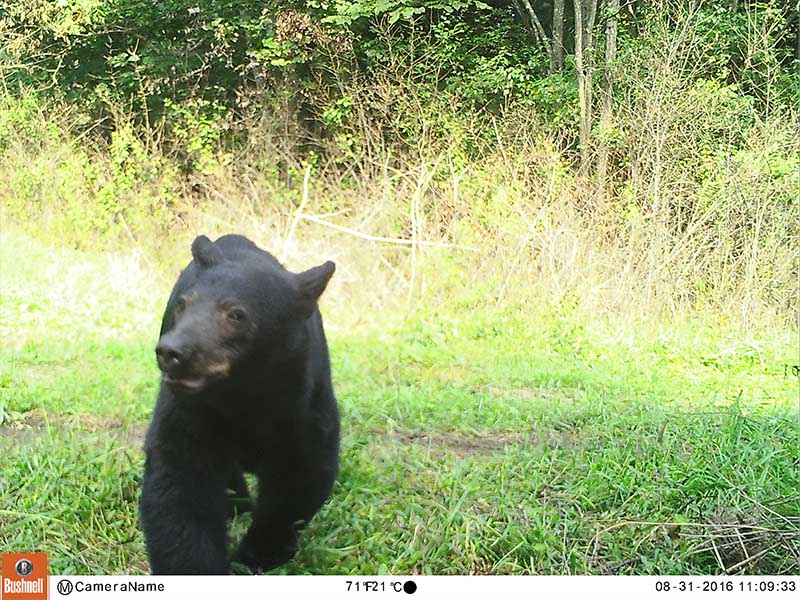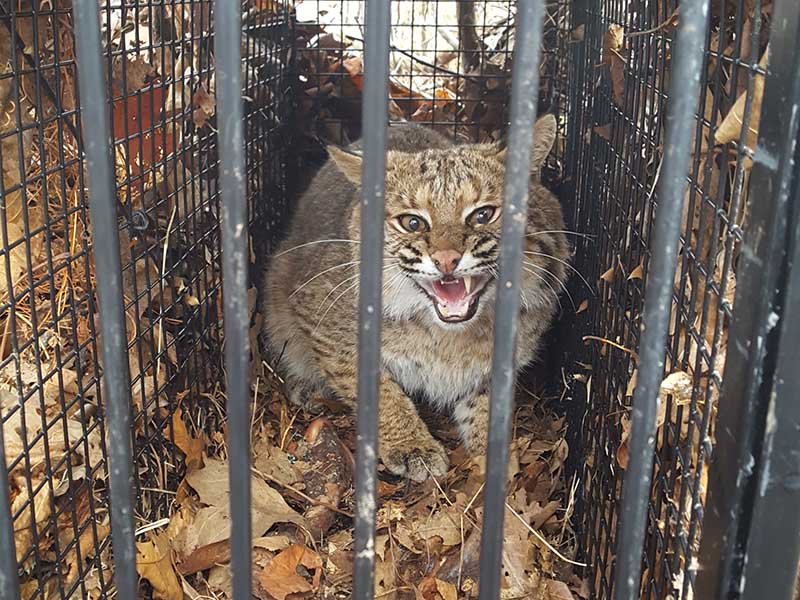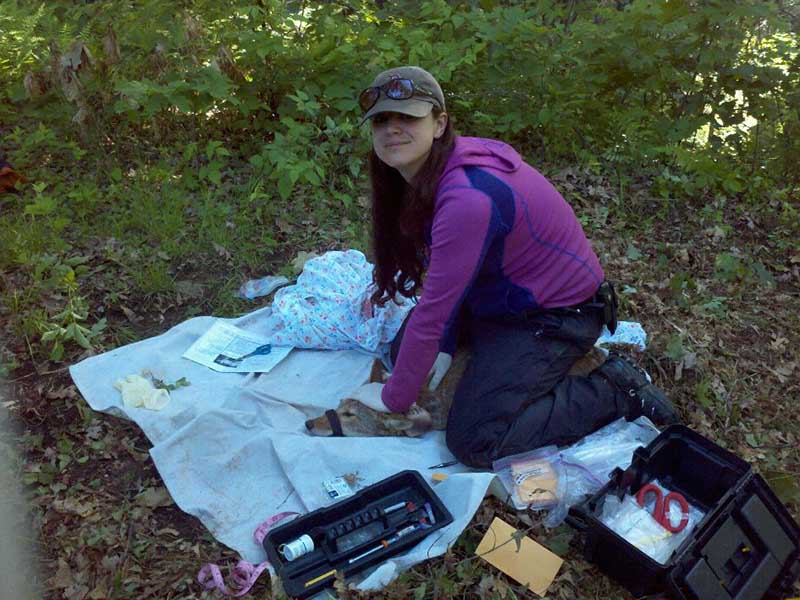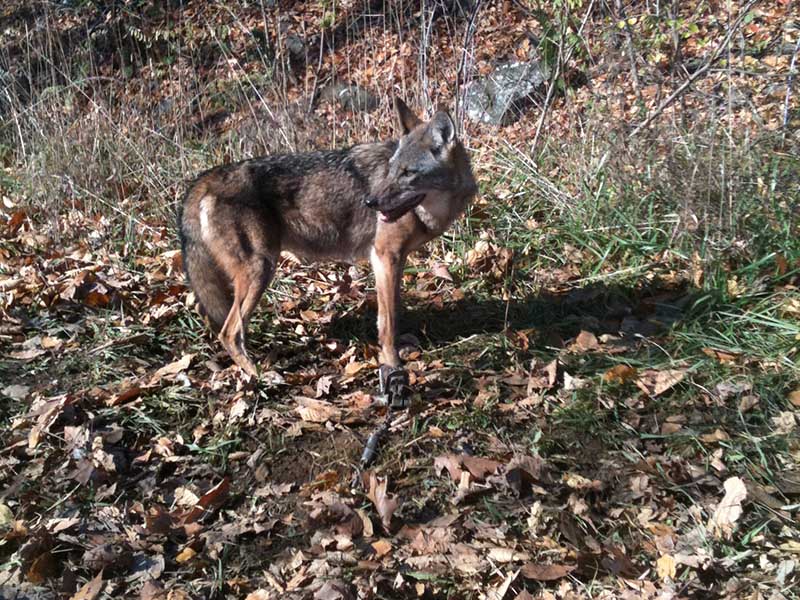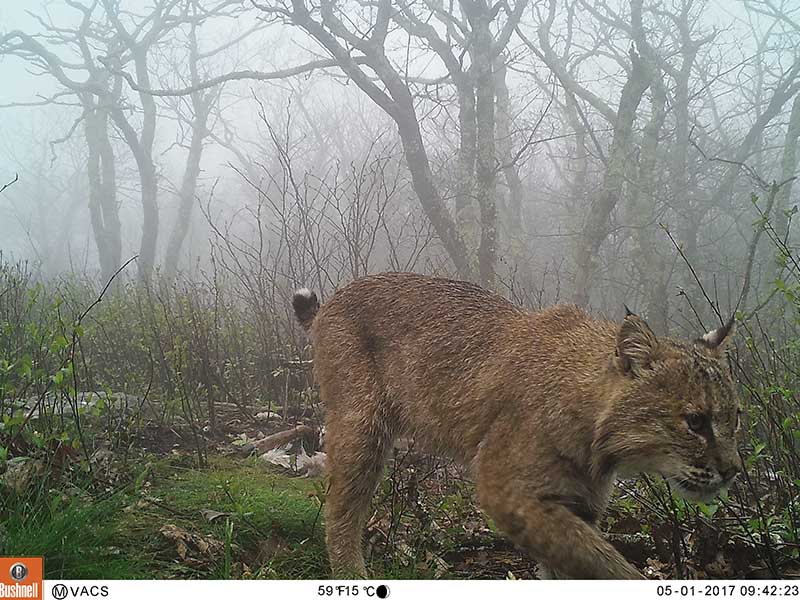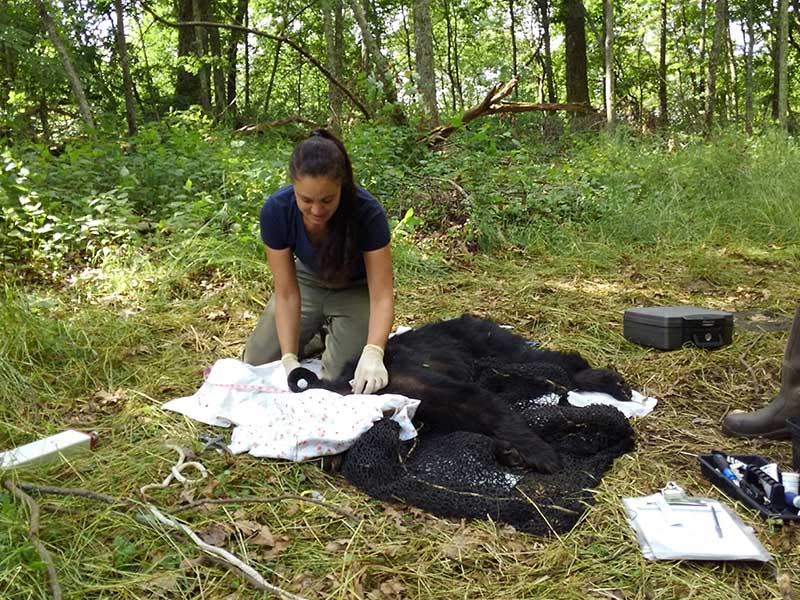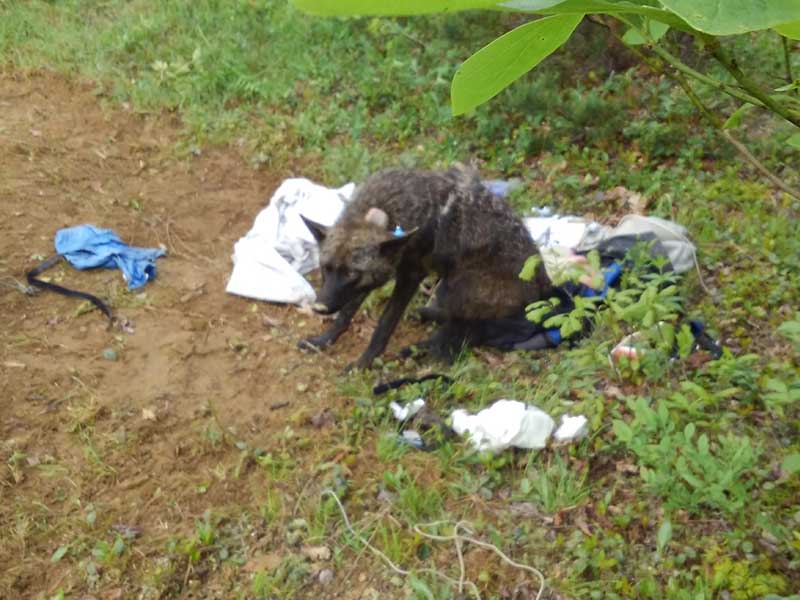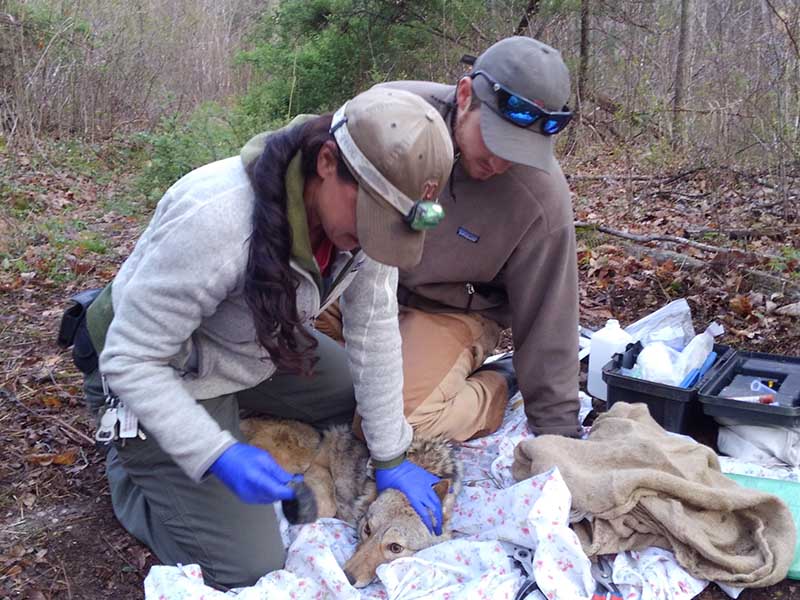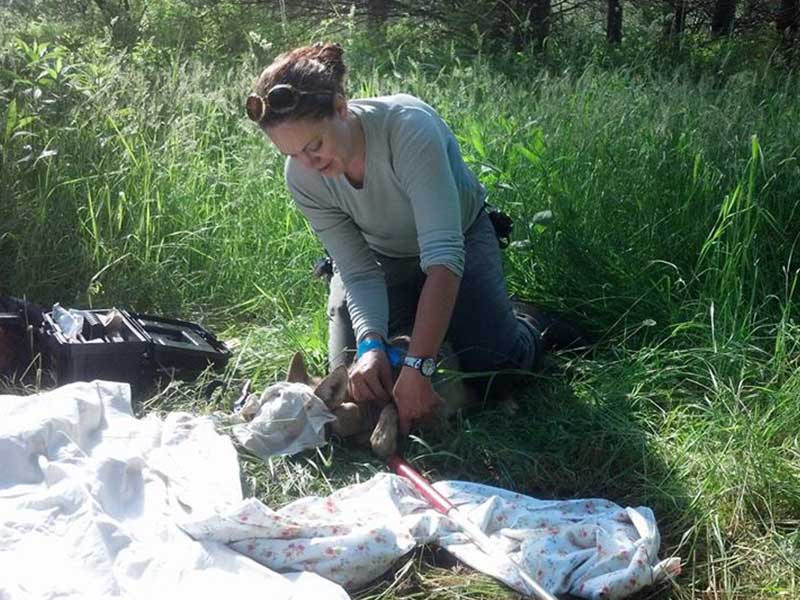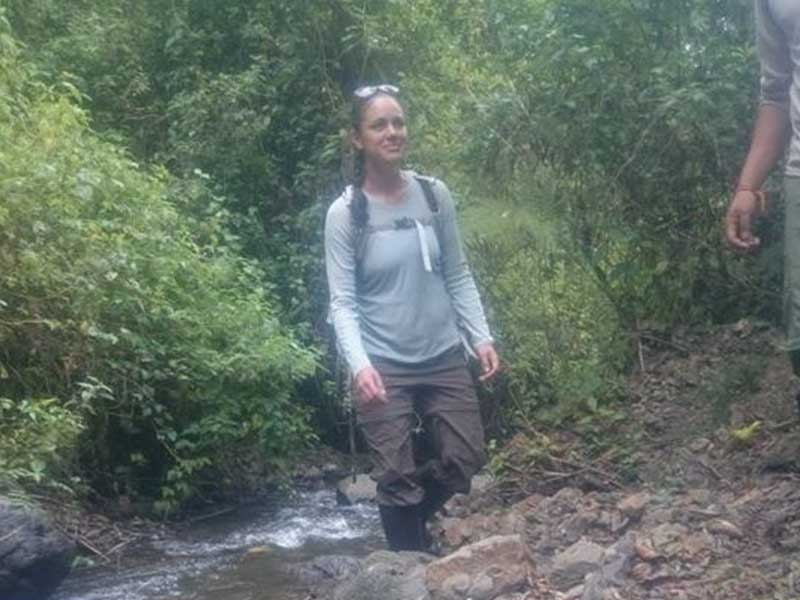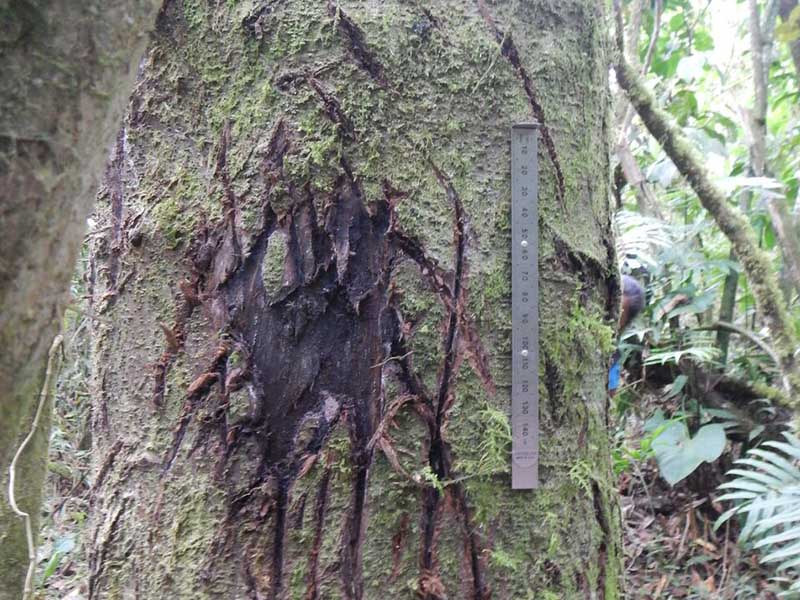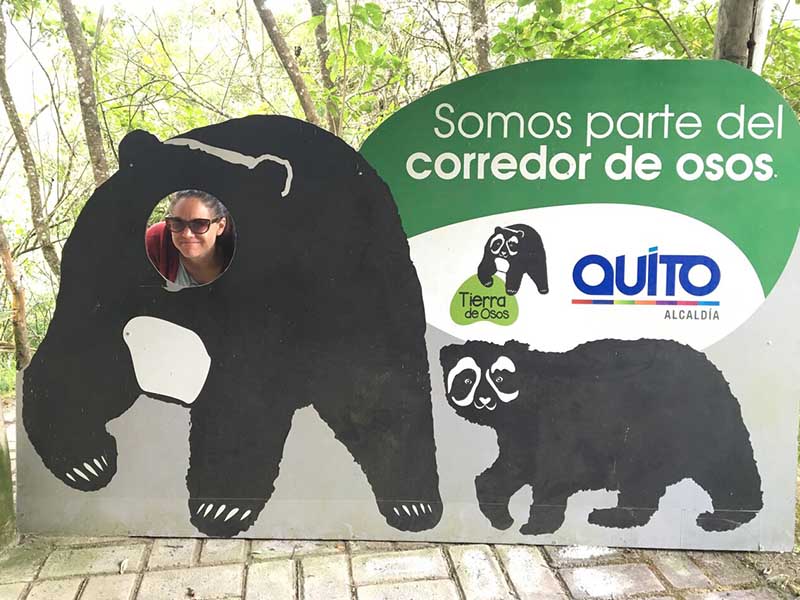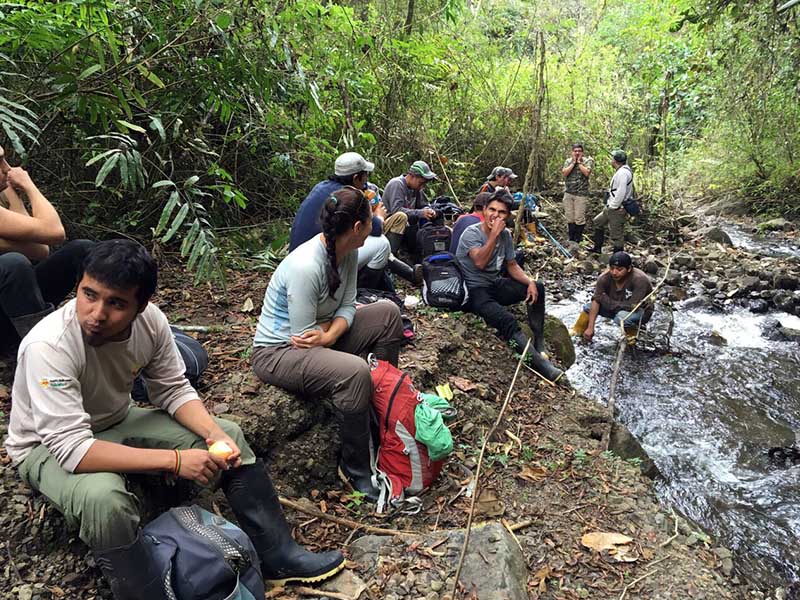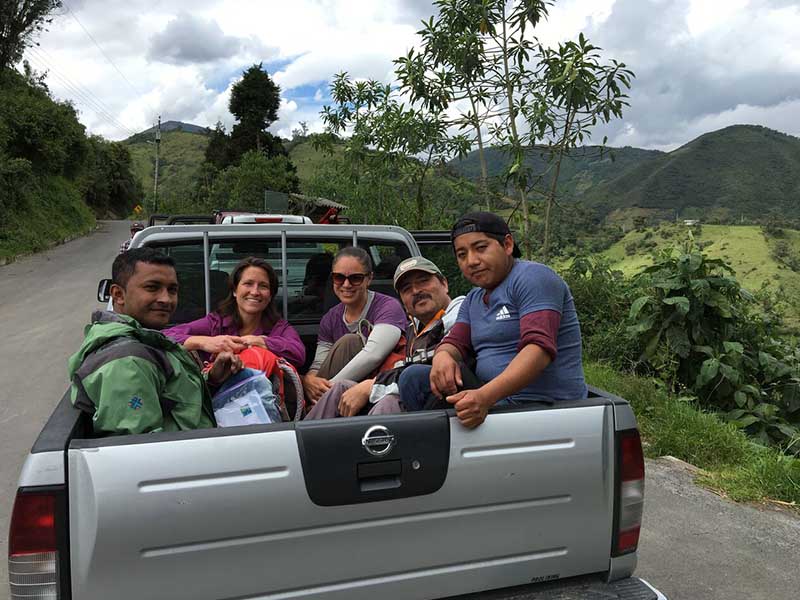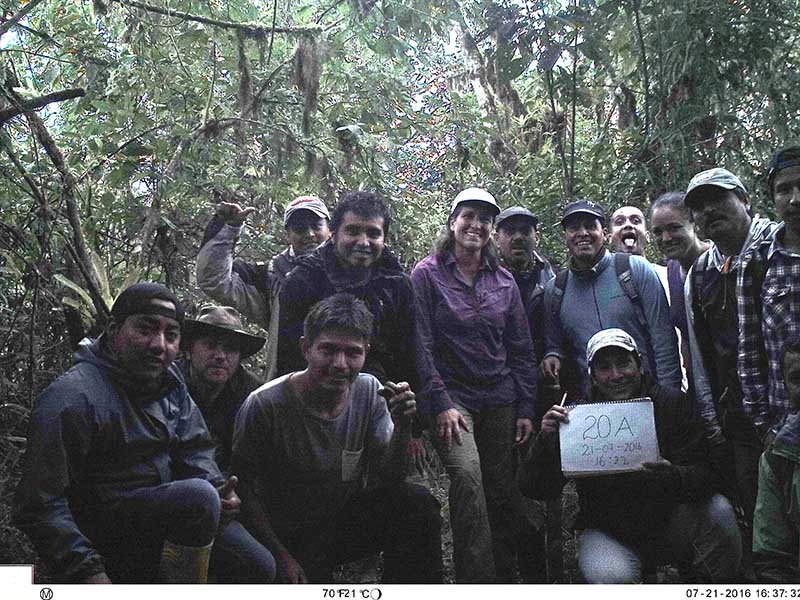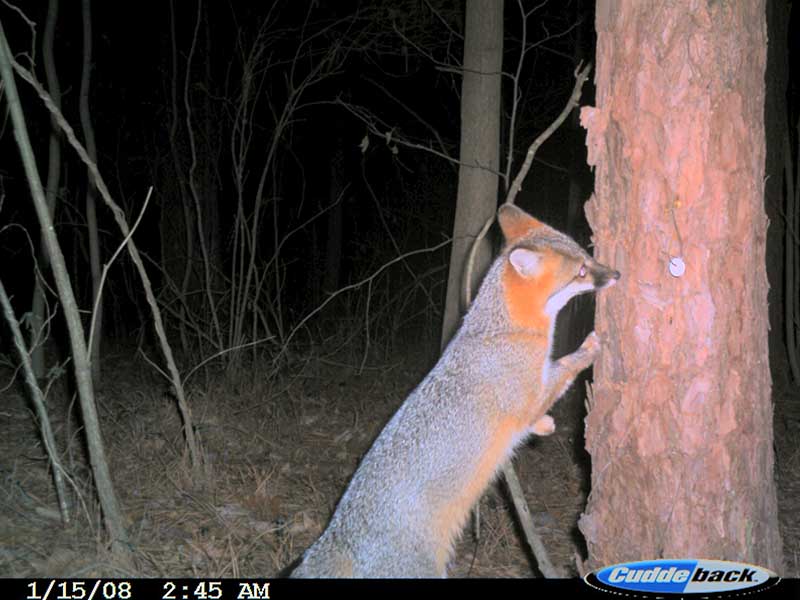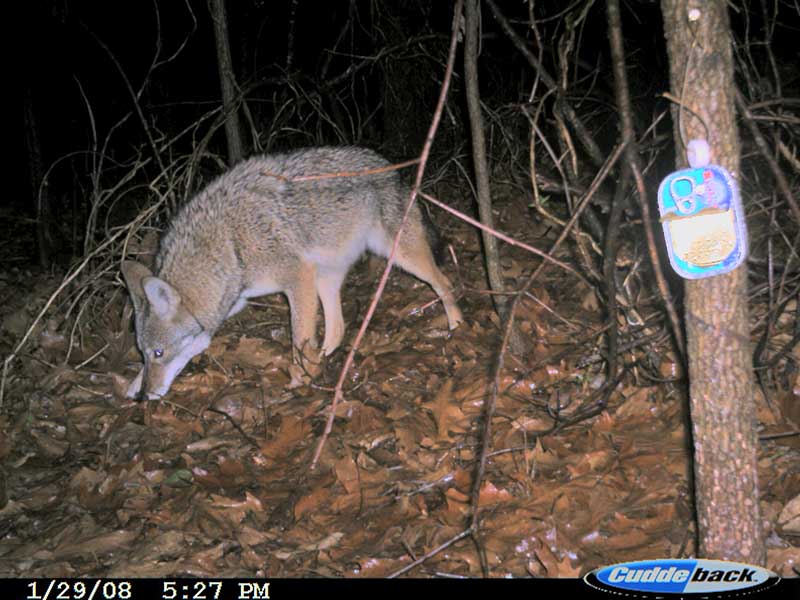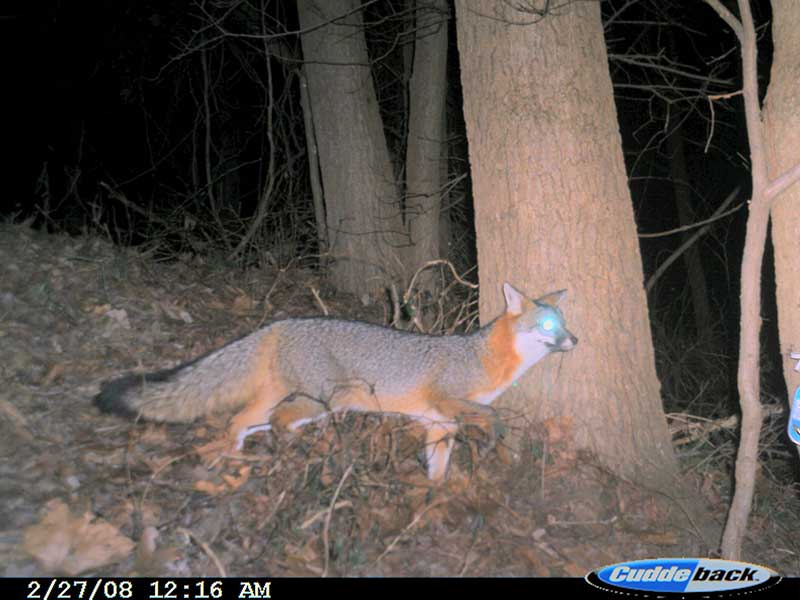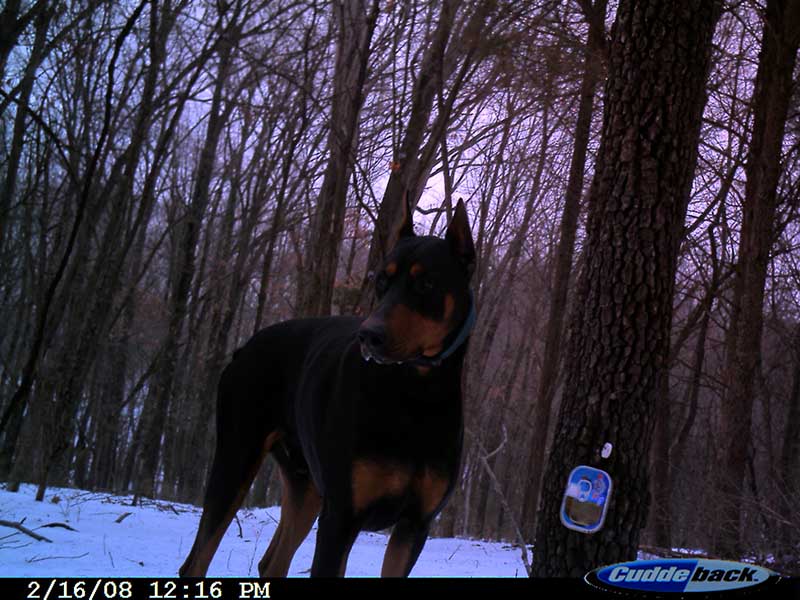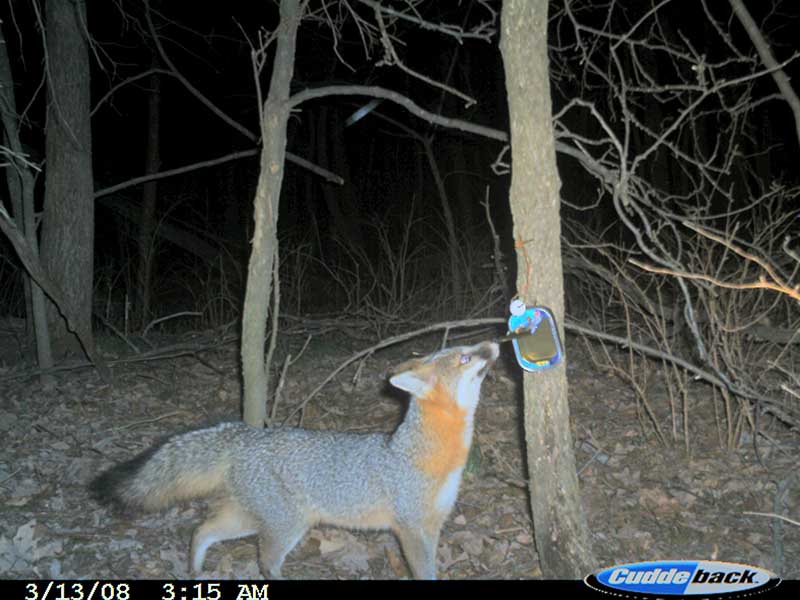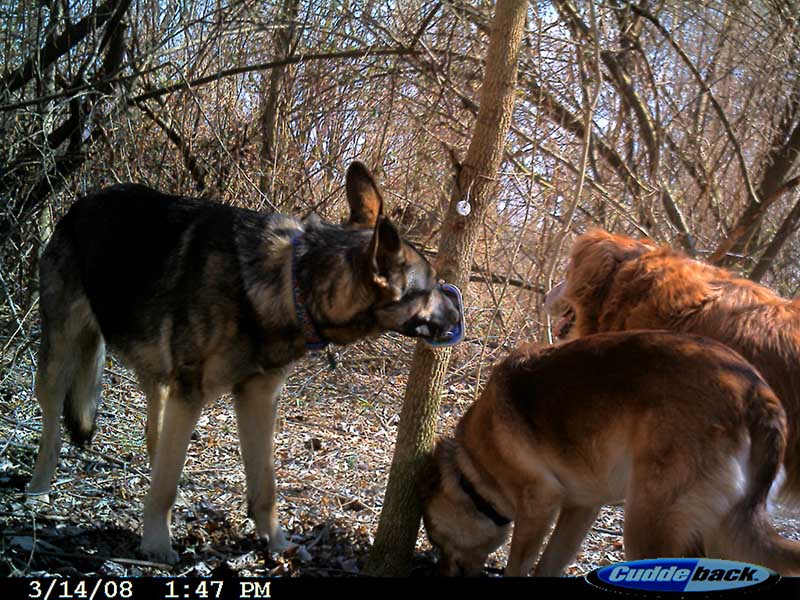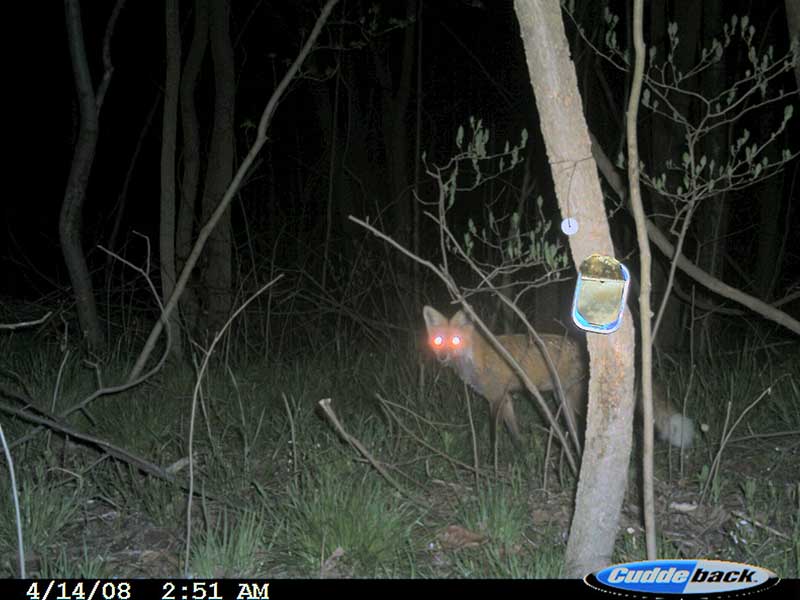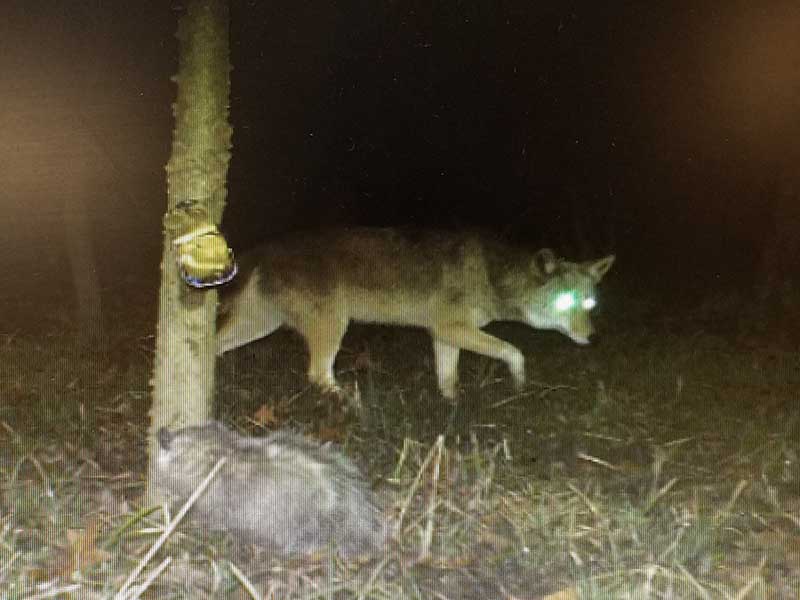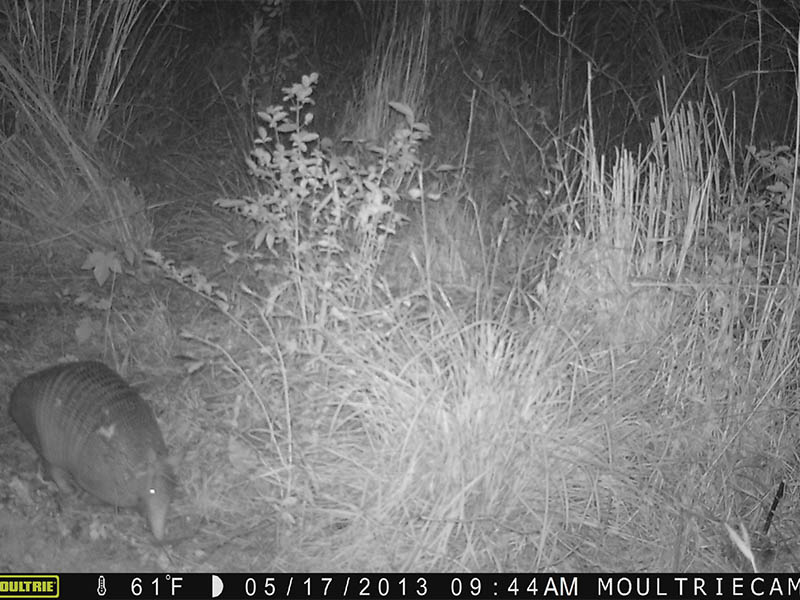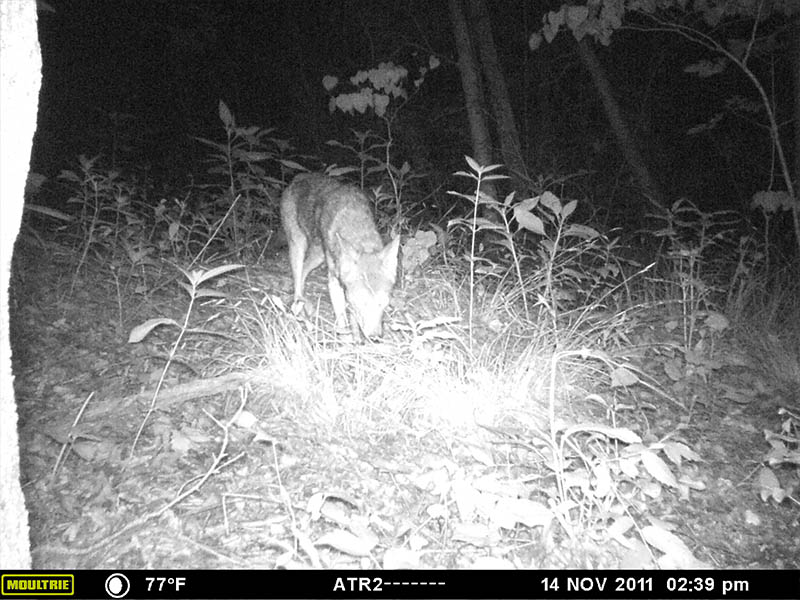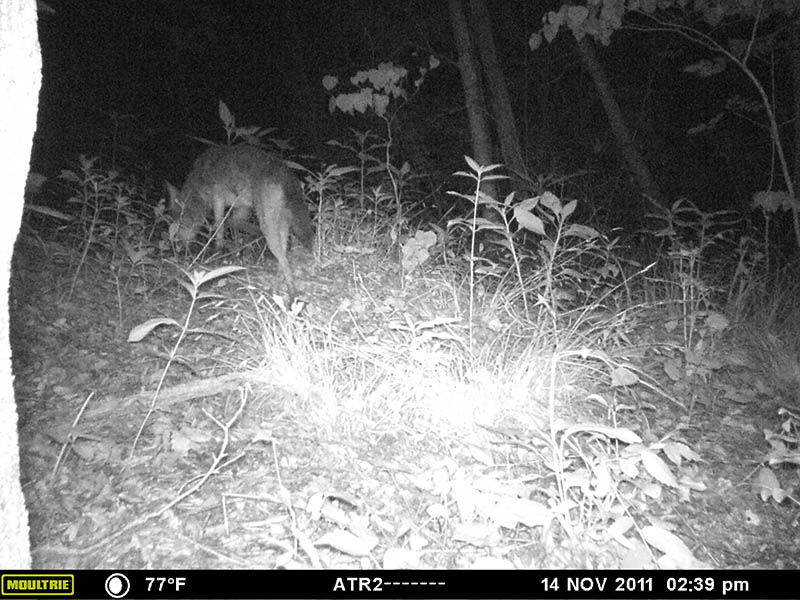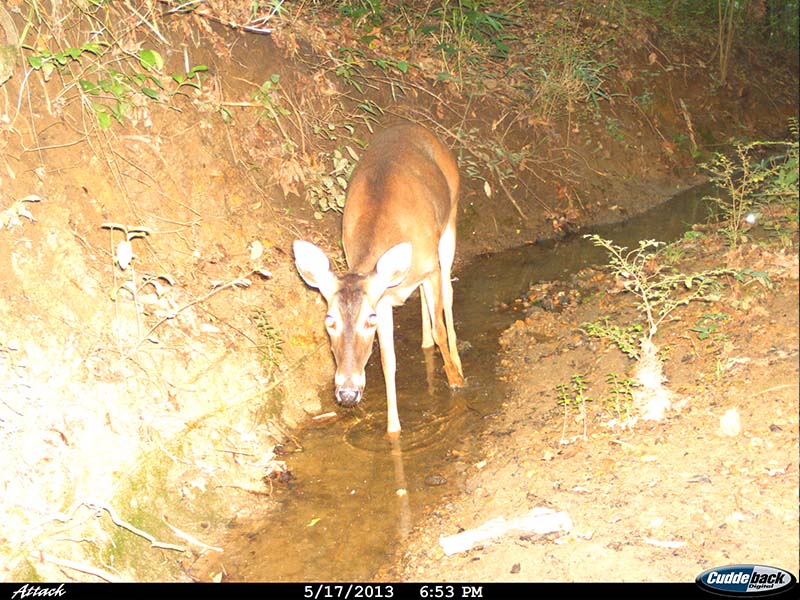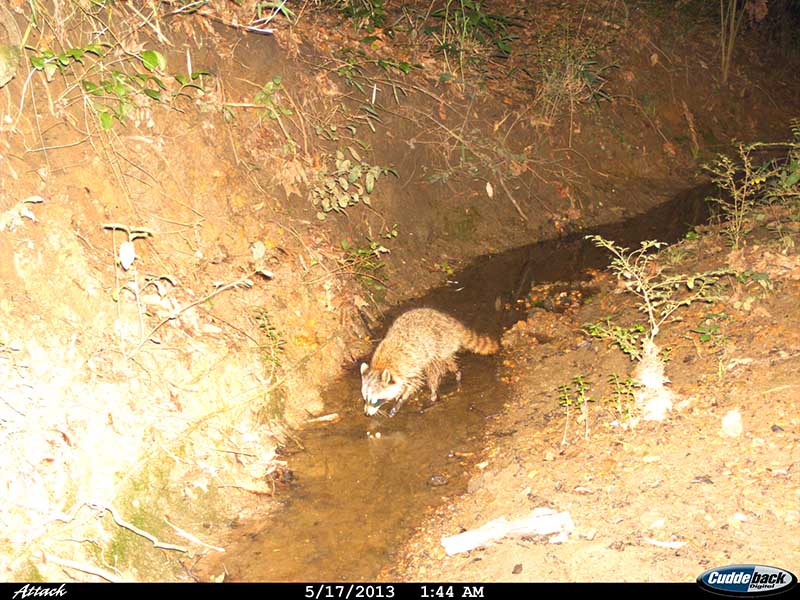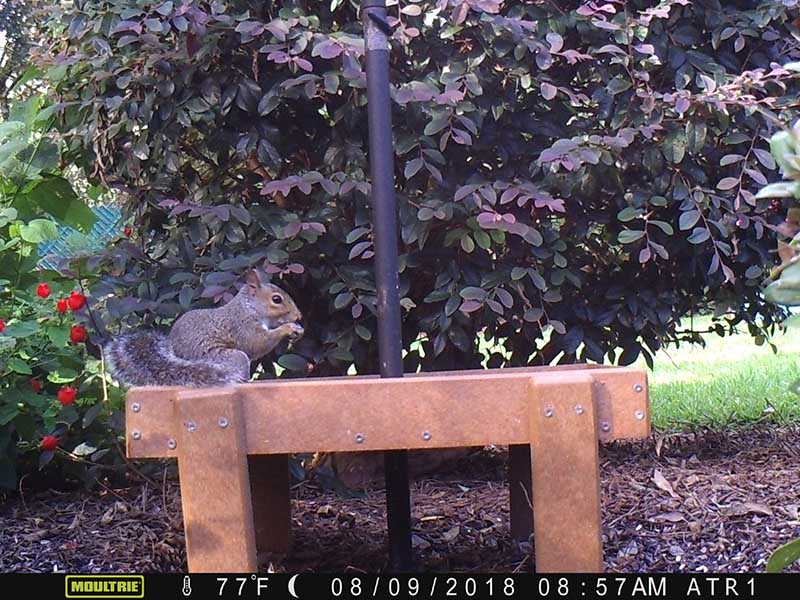Projects
Mississippi Black Bear Monitoring
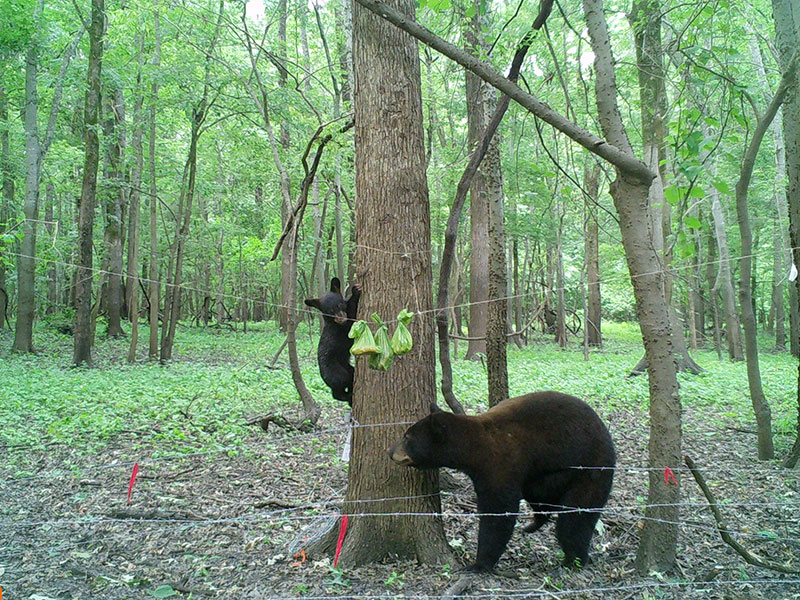
We are collaborating with MDWFP to monitor black bear population expansion in Mississippi and project population growth. We are using a suite of methods to estimate population parameters necessary to make projections including minimally-invasive genetic sampling (hair snare corrals), GPS data from collared bears, and reproductive information from den checks. As part of this project we are working in a larger regional collaboration with LDWF, AGFC, USGS, University of Arkansas Monticello, and University of Memphis to assess genetic connectivity and individual movement among populations in the Lower Mississippi Alluvial Valley (partially funded by the National Fish and Wildlife Foundation’s Lower Mississippi Alluvial Valley Restoration Fund). Field work began in May 2020 and is ongoing.
Deer Density and Impacts of CWD and Flooding
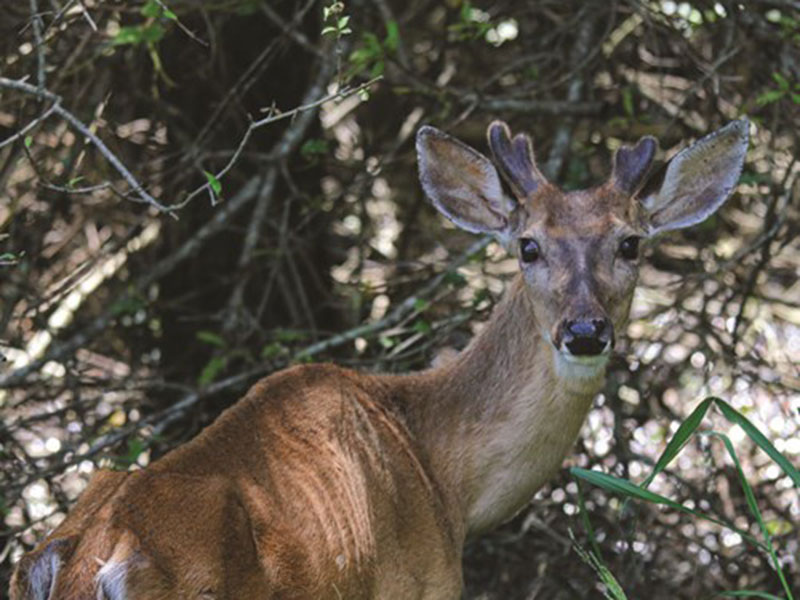
Collaboration with the MSU Deer Lab and MDWFP to develop new methods for estimating deer density without bait and assess impacts of CWD and long-duration flooding in the South Delta
Mississippi Wild Turkey Research
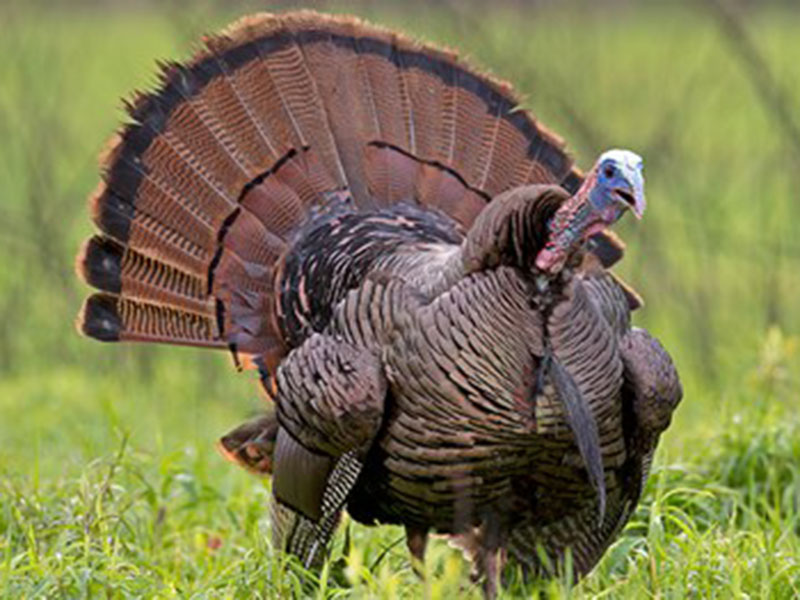
The turkey demographic modeling project is a collaboration with MDWFP and Dr. Mark McConnell (MSU WFA). The project is evaluating the potential population consequences of changing harvest structures using stochastic demographic models.
Noninvasive Genetic Sampling
One of the best ways to sample and monitor cryptic species is using noninvasive genetic sampling (extracting DNA from material animals leave behind, like scat or hair). We have a “pre-PCR” lab space at Mississippi State University to allow us to fully exploit this method in our studies and working with collaborators Stephen Spears (The Wilds), John Brooks (USDA-ARS), and Jennifer Adams and Lisette Waits (University of Idaho) to develop new protocols for isolating and amplifying NGS DNA for monitoring programs.
Michigan Black Bear CKMR
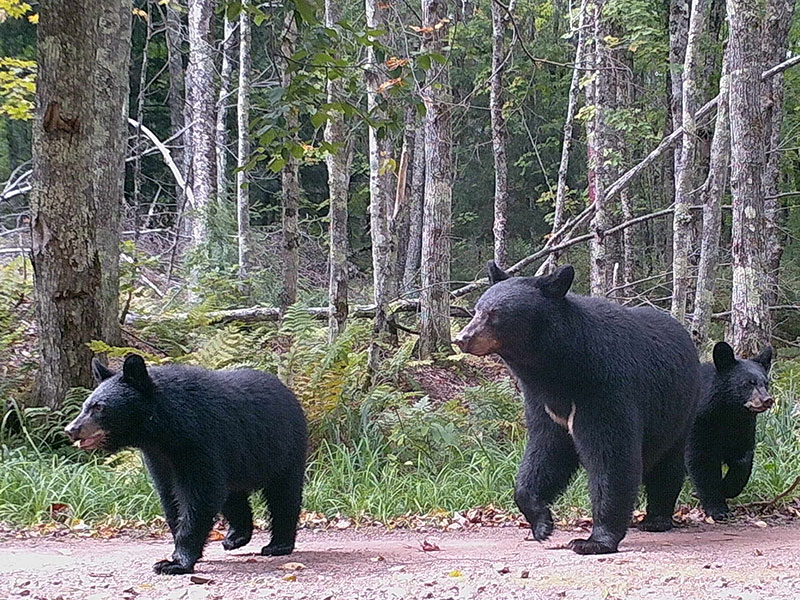
The Michigan Black Bear CKMR project aims to develop and validate Close-Kin Mark-Recapture (CKMR) models to monitor Michigan black bear populations. CKMR uses genetic samples to determine kinship relationships between individuals and estimate population parameters. This project is in collaboration with Michigan DNR, Dr. Robert Lonsinger (USGS), Dr. Kristin Brzeski (Michigan Technological University) and Dr. Lisette Waits (University of Idaho).
Collaborations with USDA-ARS
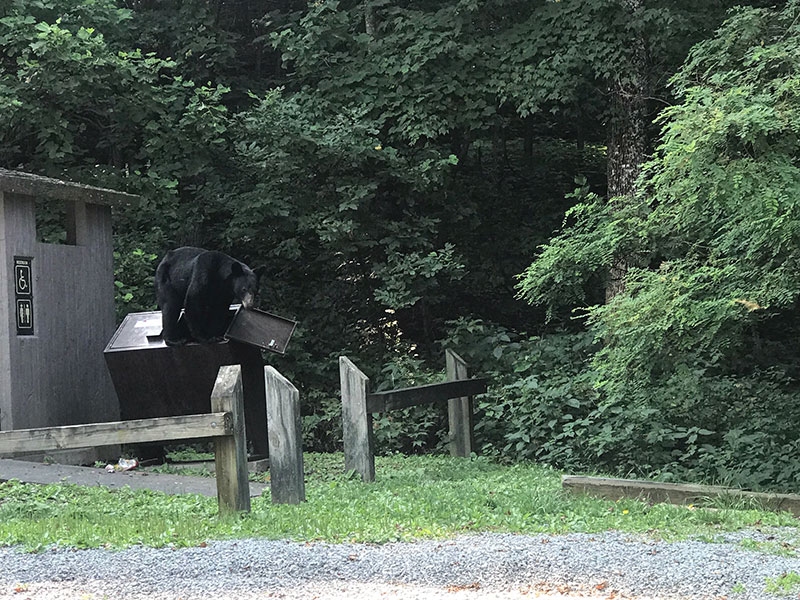
In collaboration with Dr. John Brooks (USDA-ARS), and through the use of High Performance computing, we are investigating the potential role of wildlife in the spread of antimicrobial resistance (AMR) to inform efficient monitoring strategies in agricultural systems. We are quantifying AMR distribution in multiple wildlife populations with different potential capacities to spread AMR. Our work uses of quantitative and genomic approaches to explore possible links between wildlife space use and the distribution of AMR.
Population Dynamics in Response to Disturbance
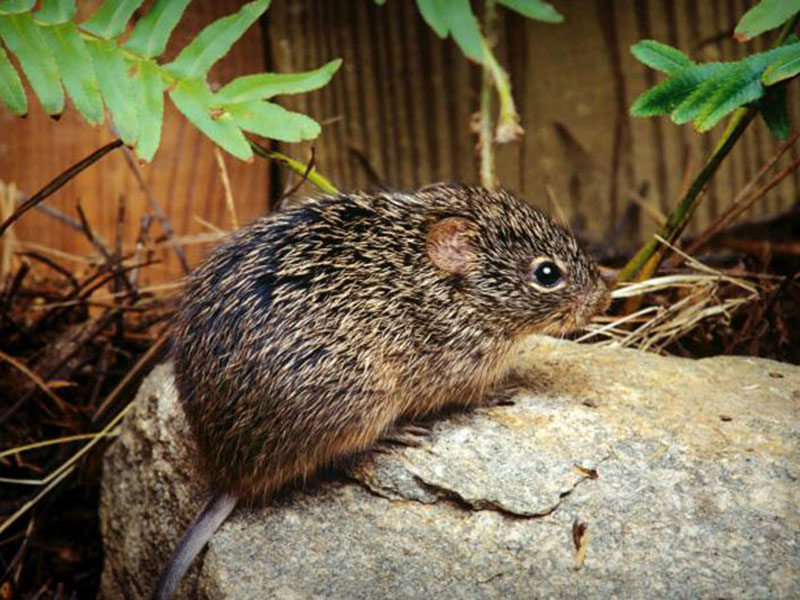
Working in collaboration with Dr. Mike Conner (the Jones Center at Ichauway) and Drs. Jay Diffendorfer and Andy Royle (USGS), we are using multiple long-term small mammal capture-recapture data sets to test applied and theoretical hypotheses about population and community dynamics in response to different disturbance regimes.
This research includes a long-term small mammal study that has been active since 2003 in the diverse longleaf pine forests at The Jones Center at Ichauway, Georgia that is maintained by prescribed fire, and a long-term small mammal study in San Diego County, CA where increasing frequency of catastrophic fires threatens endemic species.
Swamp Rabbit Monitoring in the LMAV
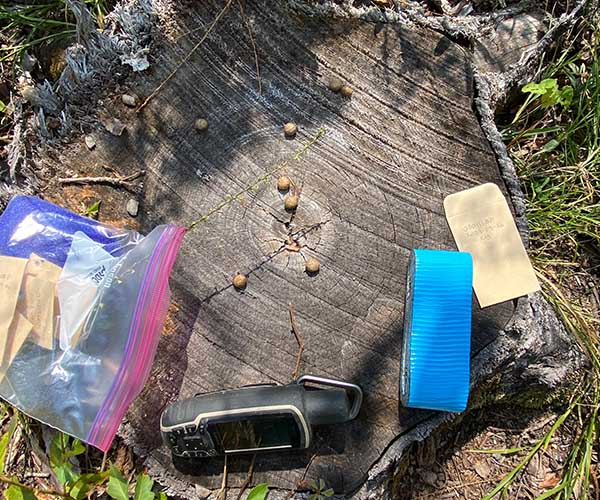
Bottomland hardwood forests have been reduced and altered by land use change, and wildlife agencies are exploring how best to restore and manage them moving forward. Swamp rabbits have been identified as a bioindicator for habitat quality in bottomland hardwood forests. We are using noninvasive genetic techniques to investigate how swamp rabbit density varies relative to forest stand conditions and gene flow among populations across Mississippi. The project is partially funded by the National Fish and Wildlife Foundation’s Lower Mississippi Alluvial Valley Restoration Fund and in collaboration with Drs. Mark McConnell, Brian Davis (MSU WFA) and MSU Department of Forestry.
North Carolina Coastal Black Bear Populations
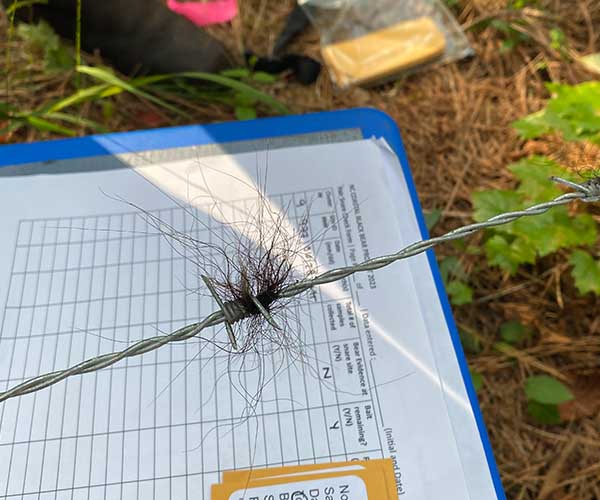
We are implementing a genomic approach to develop a SNP (single nucleotide polymorphism) panel to analyze non-invasive genetic samples acquired using hair snare corrals to help NCWRC estimate density and population structure of black bears in the Coastal Bear Unit in North Carolina. This project is in collaboration with Dr. Nathan Hostetter (USGS/North Carolina State University), Joe Clark (University of Tennessee), Colleen Olfenbuttel and the North Carolina Wildlife Resource Commission, and USGS North Carolina Cooperative Fish and Wildlife Research Unit. The project is partially funded by USDA – Pittman Robertson Act and North Carolina Wildlife Resource Commission.
Past Projects
eDNA for weasels and shrews Project
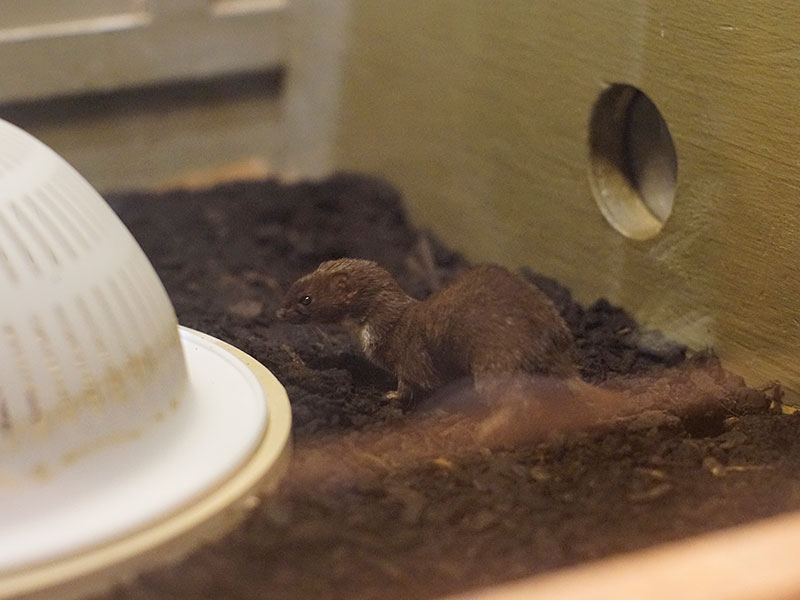
This project was in collaboration the Indiana Department of Natural Resources (IDNR), the Western North Carolina Nature Center, Drs. John Brooks, Stephen Spear, and Eric Hileman to assess how environmental DNA (eDNA) and baited sampling devices can be used to detect small and elusive mammal species (shrews and weasels).
VACS II: The Virginia Appalachian Coyote Study (VACS)
VACS (https://www.roanoke.com/news/education/virginia-tech-study-shows-adaptability-of-coyotes/article_c9893226-ea5a-56dc-8727-13c7bbf6df74.html) was a collaboration with Virginia Tech, Virginia Department of Game and Inland Fisheries, US Forest Service, and The Nature Conservancy initiated in January 2011 and was the first ecology study of coyotes in Virginia.
We completed field work in July 2013, which included fitting coyotes with satellite GPS collars and collection of fecal DNA from establish scat transects that I processed at University of Idaho to obtain individual genotypes used to estimate populations parameters, and determine species of origin for diet studies.
One of the primary outcomes of the VACS project was the discovery that more than half of the scats collected in the study areas were bobcat scats, and seasonally, bear scats, resulting in questions about intraguild interactions and overall impacts in the region.
This led to the start of the Virginia Appalachian CARNIVORE study (VACS II: https://www.dgif.virginia.gov/blog/research-at-virginia-tech-seeks-to-understand-interactions-between-predators-and-whitetailed-deer/), building on our initial research to answer questions about exploitative and interference competition, niche separation, responses to management practices, and predation and scavenging ecology.
Andean Bear Corridor Study
In 2014, the Metropolitan District of Quito designated habitat to the north of the city for the protection of habitat for the Andean bear (Tremarctos ornatus).
Researchers at USGS and Cornell University, in a large collaboration including Wildlife Conservation Society and CONDESAN, among others, initiated a landscape-scale camera trap study to estimate Andean bear movement and connectivity throughout the corridor with spatial capture-recapture methods.
To learn more about the Andean Bear Corridor project:
Southern Illinois Carnivores
From 2008 – 2010, researchers at Southern Illinois University ( https://wildlife.onlinelibrary.wiley.com/doi/pdf/10.1002/wmon.1015) conducted an extensive camera trap study in a >16,000-square km landscape, with >1,000 camera locations and >100,000 animal detections (and they let me play with the data).
In addition to an article on how landscape context facilitates occurrence of domestic dogs and cats (https://www.sciencedirect.com/science/article/pii/S2351989418301665), we are working on manuscripts investigating if opossums what make opossums synanthropic, and how the high occupancy rate of dogs changes interactions among red fox, gray fox, and coyotes.
Avian Responses to Landscape-scale Prescribed Fire
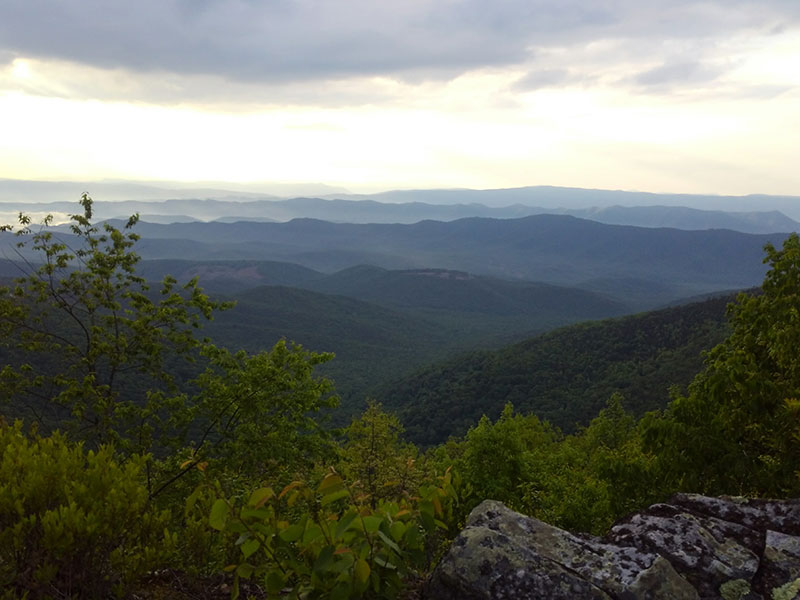
In collaboration with The Nature Conservancy to assess bird population and community level responses to post-prescribed fire vegetation dynamics in a eastern North American hardwood forest.
Maine Black Bear Stable Isotope Study
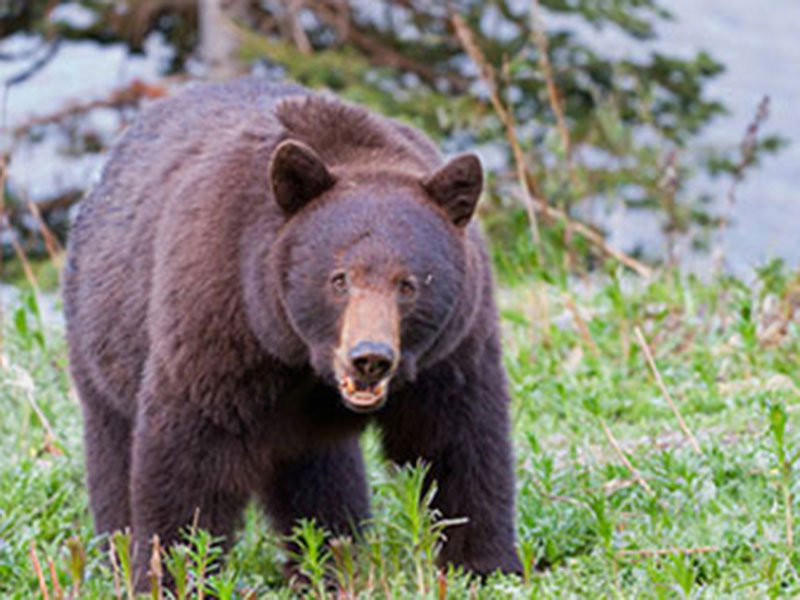
Collaboration with Elizabeth Flaherty (Purdue University) and Maine Department of Inland Fisheries and Wildlife to investigate how bait and other human food resources may impact black bear reproductive rates.
Tropical African Pangolin Monitoring
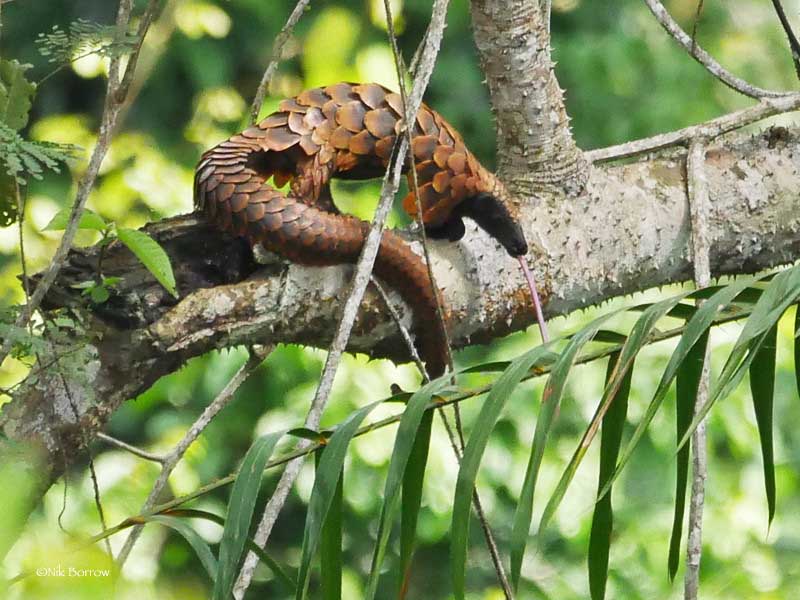
We are working with the IUCN SSC Pangolin Specialist Group to develop and test new methods for sampling and monitoring pangolins in the Central Africa.
For more information on pangolin conservation, see:
- https://www.pangolinsg.org/pangolins/
- https://www.savepangolins.org
- https://www.iucn.org/news/species/201808/experts-gather-cambridge-improve-monitoring-methods-pangolins
- https://www.amazon.com/Pangolins-Science-Conservation-Biodiversity-Landscapes/dp/0128155078/ref=sr_1_1?keywords=pangolins+science+society&qid=1560823741&s=gateway&sr=8-1
Urban Carnivores
We are collaborating with Dr. Adam Rohnke and the Mississippi Master Naturalists (https://masternaturalist.extension.msstate.edu/) and partnering with the Urban Wildlife Information Network (https://urbanwildlifeinfo.org/) to better understand what carnivores and other animals are doing in Mississippi’s urban areas.
Story - (MSU joins Urban Wildlife Information Network).

